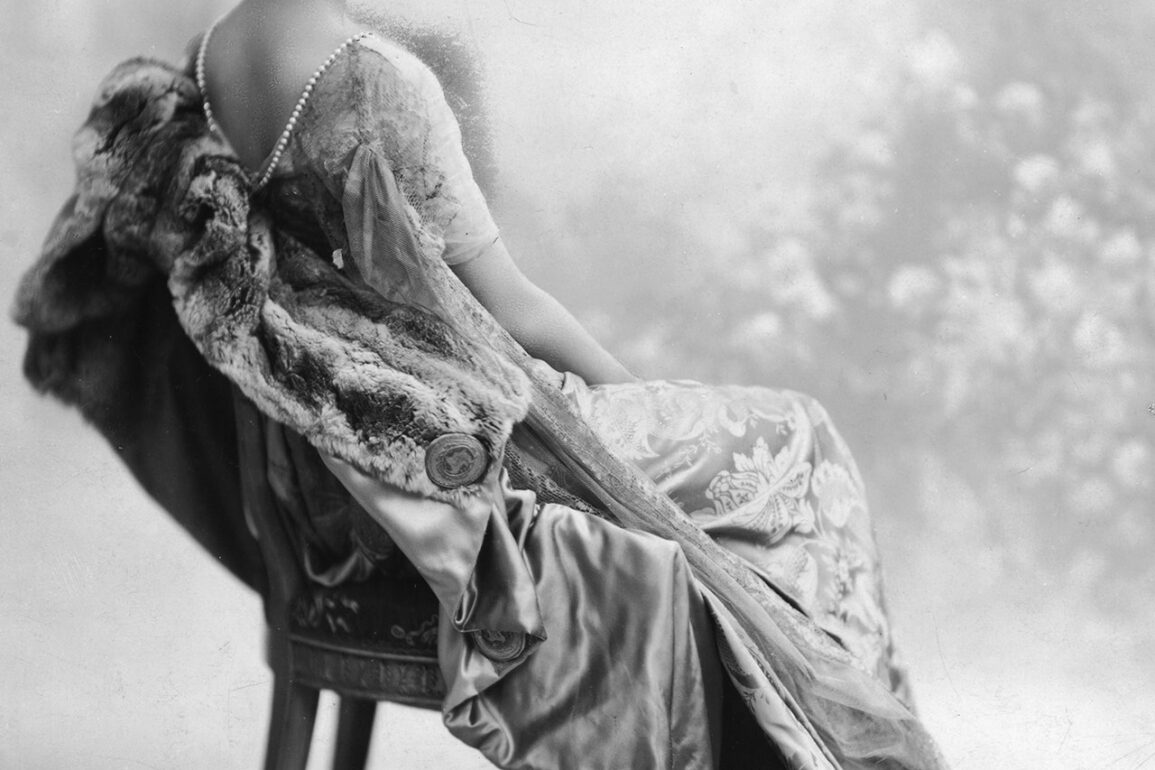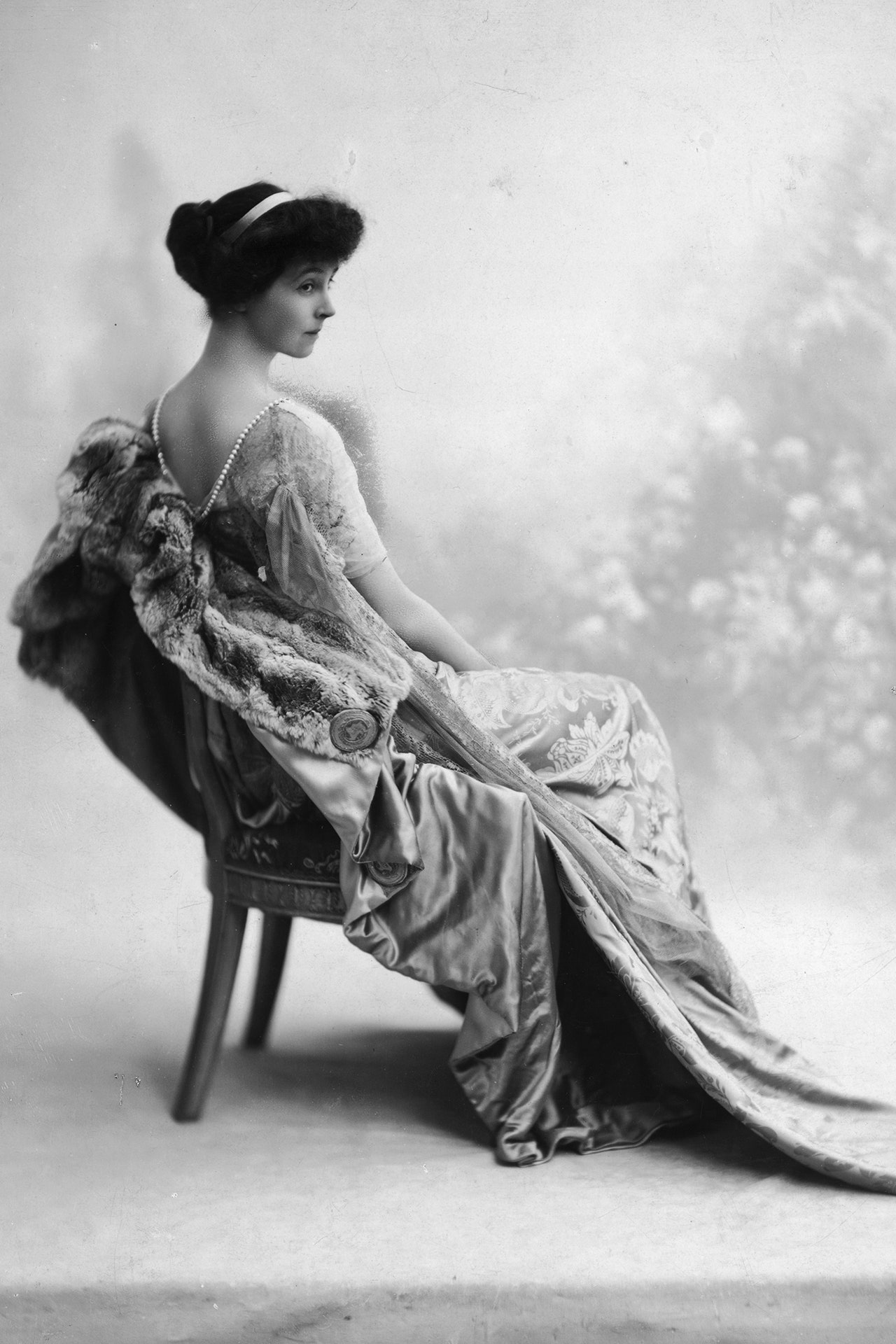The racier activities of the set, however, revolved around their various country houses. Away from the city, the Marlborough bunch would host weekend-long parties, hunting, shooting, drinking, playing cards and racing horses. It was well-known that adultery was common at these parties and the set were condemned by the more pious elements of Victorian society – but the rumours on the whole only increased Edward’s popularity with the general public.
As for this portrait of Lady de Grey, it was painted for her by John Singer Sargent, the expatriate American portraitist. At the time, Sargent was at the height of his fame – indeed, we know that the painting was in his studio at the same time as his most storied painting, the group portrait of the Duke of Marlborough and his wife, the American socialite, Consuelo Vanderbilt (now at Blenheim Palace.) This particular portrait, beautifully restrained, with a soft, nearly abstracted olive background, shows Lady de Grey in a simple pearl choker and earrings. Sargent shows off his his minimalist brushwork, drawing her face in a winning, optimistic, and energetic gaze; he depicts her low-cut black evening dress in a series of more exuberant strokes completing the painting’s aura of Lady de Grey’s irrepressible social energy. It has come to auction for the first time after more than a century in the ownership of her family and is expected to fetch £400,000-600,000.
The painting is in pristine, nearly untouched condition – though you might not be able to say the same thing of Lady de Grey’s reputation. Indeed, her impact on the London scene was quite something. She was a close friend of Oscar Wilde’s, who dedicated his play A Woman of No Importance to her. She also singlehandedly established the fashion for aristocratic women dining out in public – Cesar Ritz personally invited her to dine at The Savoy. She was a great champion of the arts, lifting the Royal Opera House from the ashes – she practically resuscitated opera and its institutions, which were by then on their deathbed in London. She was also the first to bring the Ballets Russes to London, causing a sensation when she inserted a performance in Covent Garden on the eve of George V’s coronation. She was a devotee of Fabergé and was instrumental in helping to open their first shop in London in 1903. As testament to this, this very portrait available at Sotheby’s was actually exhibited as part of the V&A’s recent exhibition on Fabergé. On the whole, Lady de Grey’s impact was both utterly seedy and utterly brilliant; alongside her hedonistic excesses, she made many lasting contributions to culture in this city – and remains something of an icon.
As for Sargent, a major exhibition of his work is headed to London next year. Fashioned by Sargent which details his keen eye for fashion, is currently at the MFA in Boston. It will be at the Tate Britain in February 2024. I certainly doubt if any of Sargent’s other sitters could have matched Lady de Grey for scandal.
This post was originally published on this site be sure to check out more of their content.










